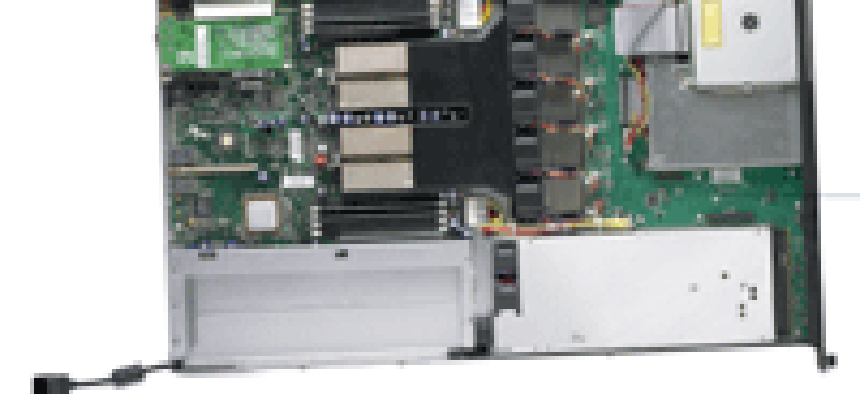Baby steps are best when switching to 64-bit

The best thing about migrating to 64-bit computing might be that you don't have to do it in one great leap.
The best thing about migrating to 64-bit computing might be that you don't have to do it in one great leap. A new class of dual-processor servers using Opteron and Xeon chips lets you make the move incrementally.Servers with the new Opterons from Advanced Micro Devices Inc. of Sunnyvale, Calif., or Xeons from Intel Corp. offer simultaneous support for 32-bit and 64-bit applications. This can mean a lot if you want to move up to 64-bit computing but, because of high costs or limited staff, need to continue using legacy 32-bit operating systems and applications.Clearly, 64-bit computing offers advantages. In the case of system memory, for example, all 64-bit processor architectures incorporate direct access to almost limitless RAM; 32-bit processors have a limit of 4G. And the data paths of 64-bit processors are twice as wide as those of 32-bit processors, so they can manipulate twice the data in the same clock cycle.Dual-processor systems such as those in the chart will let you retain 32-bit applications in a mixed environment until it becomes cost-effective to move to an all 64-bit environment.Servers based on dual Opterons or Xeons are relatively new. Advanced Micro Devices released the first Opteron in 2003, getting the jump on Intel, which had been concentrating on the Itanium 2, a full 64-bit series designed to compete with high-end RISC 32/64-bit processors. Intel finally came forth with the dual-processor Xeon last year.Unlike conventional processor designs, AMD's Direct Connect Architecture lets the Opteron CPU connect directly to system input and output. AMD argues that this design overcomes the throughput bottlenecks inherent in bus-based connections between the CPU and input and output.The Opteron design allows support for up to three coherent HyperTransport links, providing peak bandwidth per processor of up to 19.2 Gbps, or 6.4 Gbps per link.The Opteron's huge 256T memory address space creates a significant performance benefit for applications in which large or many data sets are held in memory, according to AMD.Intel's answer to the Opteron was the new Xeon processor with an 800-MHz bus. Like the Opteron, it supports both 32-bit and 64-bit applications and comes in a variety of models with speeds of up to 3.6 GHz.With features such as HyperThreading, Intel Extended Memory 64 Technology (EM64T) and the fast system bus, Intel is positioning the new Xeon to occupy a perch just beneath its 64-bit Itanium processor line in terms of power and performance.HyperThreading increases processor efficiency by providing thread-level parallelism. EM64T technology permits running of Xeon platforms in three modes:The chart focuses on rackmount designs, as their flexibility makes them more appealing to IT departments exploring the 32-bit and 64-bit computing environment.With the notable exception of Hewlett-Packard Co., Sun Microsystems Inc. and IBM Corp., few mainstream server vendors have incorporated the Opteron into their product lines.Dell Inc. has expressed interest in the 32/64-bit technology but has yet to commit to development of an Opteron product line.Sun recently announced that its new SunV20z servers, powered by two 2.4-GHz Model 250 processors running Solaris, is shattering records and delivering breakthrough price and performance for databases, application servers, Web servers, compilers and more.Hewlett-Packard also is testing the Opteron waters with its new ProLiant DL145, a 1U rackmount server.And IBM recently unveiled its eServer 326, a 1U rackmount chassis system.A growing number of online vendors will let you configure your Opteron server online. On the Xeon side, the story is similar. Most mainstream companies will let you buy preconfigured versions of these servers, or will help you configure them to your own specifications and liking.And as with Opteron servers, a growing list of second- and third-tier vendors will help you configure and design your own Xeon server. If you go this route, just be sure to check out the vendor's track record, reputation, repair and service record before signing on the dotted line.


J.B. Miles writes from Honomu, Hawaii. E-mail him at jbmiles@starband.net.

Xeon ProLiant DL360

Opteron ProLiant DL145
- Legacy Mode, which supports the running of 32-bit operating systems and applications
- Compatibility Mode, which lets 64-bit operating systems interact with 32-bit or 16-bit applications
- Full 64-bit Mode, in which maximum extended memory performance is required for 64-bit OSes and applications.
J.B. Miles writes from Honomu, Hawaii. E-mail him at jbmiles@starband.net.
NEXT STORY: Corrections